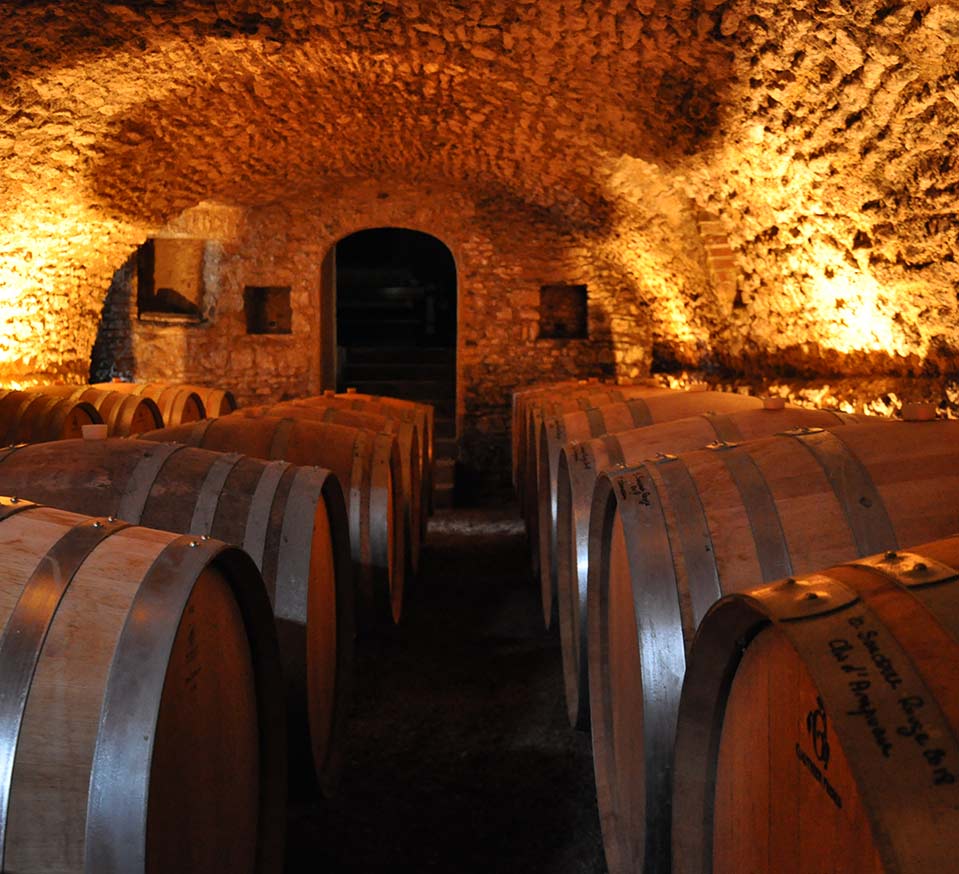The Company: Vineyard and Trading
The vineyard is spread across the Sancerre and Menetou-Salon appellations, encompassing around forty plots. Our vineyard presents an exceptional diversity of soils, exposures, and slopes across the three main terroirs of our appellations.
It allows us to craft wines ranging from classic blends to terroir-driven and single-vineyard wines.
Our trading activity encompasses 100% of our Pouilly-Fumé, an appellation for which we do not own vineyards. It may also occasionally and partially involve our Sancerre red and rosé, Cuvée La Grange Dîmière, as well as Menetou-Salon white and red, Cuvée Le Charnay.
The other wines exclusively come from our vineyards.
Three major types of terroirs make up the Sancerre, Menetou-Salon, and Pouilly-Fumé appellations:
“Caillottes”
stony calcareous clay soil

Kimmeridgian Marl
or “Terres Blanches”, clayey calcareous clay soil

Flint
siliceous clay soil

The vineyard management
The vines in the Sancerre and Menetou-Salon appellations are managed according to the practices of our wine region: low-trained vines with narrow spacing, at a density of 7,000 to 8,000 vines per hectare.
The Guyot Poussart pruning method ensures a balanced growth of the vines and respects the sap flow. The vines are pruned and, if necessary, shoot-thinned to control yields and improve the health of the future foliage.
Amendment is either organic or based on composted manure. Ground cover and soil management are handled mechanically based on erosion risks and the plant's water and nutritional needs.
New cover cropping and green manure techniques, derived from conservation agriculture, are implemented to structure and naturally amend the soil while avoiding the negative impacts of mechanical work and repeated equipment passages. Through observation and anticipation, we reduce our phytosanitary impact by minimizing the number of interventions.
With the aim of embracing sustainable viticulture, our management practices continually evolve to ensure the longevity of the vines and the terroir while producing high-quality grapes.


The winery
Located in the heart of the village of Bué, the buildings have evolved with the growth of the estate. The oldest structures date back to the early 17th century, with a portion of the winery incorporating one of the old tithe barns of the village.
As the cultivated areas expanded, the buildings also grew to accommodate production capacities and house modern equipment.
Thanks to these facilities and our working methods that combine new techniques with respect for traditions, we can craft our wines under optimal conditions.
The vinification of our harvest: general principles
The unique oenological journey of extended fermentations and prolonged aging on total lees enhances the complexity of our wines while preserving fruit and freshness. Through each wine, it elevates the essential characteristics of each of our terroirs – that's our signature.
